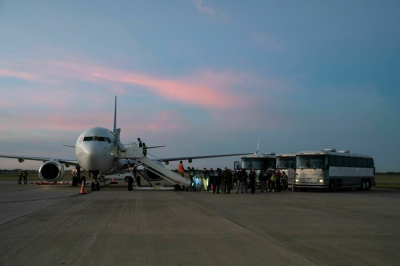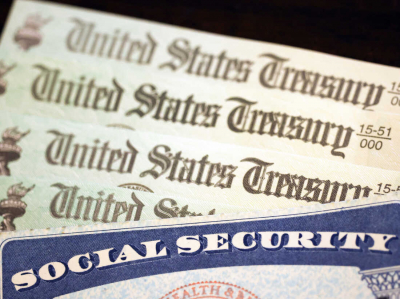
Amidst the intricacies of personal budgeting, the specter of rising food prices looms large, shaping perceptions and potentially swaying voter sentiment. Recent findings from Purdue University underscore this concern, revealing a prevailing expectation among consumers for continued food price escalation in the upcoming year. Against the backdrop of a 25 percent surge in food prices from 2019 to 2023, apprehensions are palpable, fueling a divergence between public perception and expert analysis.
In a candid dialogue with All Things Considered host Ailsa Chang, Joseph Balagtas, a distinguished professor of agricultural economics at Purdue University and the lead architect behind the aforementioned report, delved into the nuances of this economic landscape. Balagtas elucidated the latest data from the Bureau of Labor Statistics, highlighting a modest uptick of 2.2 percent in food prices since March 2023 – a figure starkly contrasting with the double-digit inflation rates witnessed during the height of the pandemic.
However, despite this relatively subdued inflationary trajectory, public sentiment remains stubbornly pessimistic, with consumers consistently gauging food price inflation at a significantly higher rate – hovering between six and seven percent over the past eight months. This dissonance between perception and reality, as elucidated by Balagtas, underscores a broader phenomenon: the politicization of inflationary discourse.
As the nation finds itself in the throes of an election year, Balagtas's report delves into the intersection of political ideology and economic outlook. A compelling revelation emerges: individuals' political affiliations wield a discernible influence on their perception of inflation, with partisan lenses often tinting the interpretation of economic data.
In essence, the Purdue University report serves as a poignant reminder of the intricate interplay between economic realities, public perception, and political narratives – a dynamic that could profoundly shape electoral dynamics and policy discourse in the months ahead.
In the intricate web of economic discourse, Joseph Balagtas, with insights honed by his tenure in agricultural economics, delves into the multifaceted facets of inflationary perceptions. In a conversation with Ailsa Chang, the spectrum of political influence on inflationary interpretation is brought to light, showcasing a nuanced interplay between partisan affiliation and economic outlook.
Balagtas underscores a noteworthy trend: while inflationary concerns are pervasive across the political spectrum, Republicans tend to perceive inflation rates notably higher than their Democratic counterparts. With Republicans reporting an inflation rate of 7.3 percent higher than Democrats' estimation of 5.7 percent, the discrepancy illustrates the deep-seated influence of political lenses on economic perceptions.
Chang probes the underlying reasons behind this inflationary overestimation, prompting Balagtas to speculate on the temporal scope of consumer perception. Unlike the Bureau of Labor Statistics' methodology, which gauges prices relative to the previous year, consumers may cast their gaze further back, reminiscing about historical price fluctuations rather than adhering to a strict temporal framework.
In contemplating the electoral ramifications of inflation, Balagtas navigates the treacherous terrain of economic sentiment and political allegiance. While the incumbent's electoral fortunes are often tethered to prevailing economic conditions, the unprecedented nature of current inflationary trends adds an element of uncertainty to electoral prognostication.
Looking ahead to the electoral horizon, Balagtas anticipates a nuanced discourse surrounding food prices, tempered by the dissolution of certain inflationary drivers. While labor costs linger as a persistent factor, the specter of rapid food price inflation reminiscent of previous years remains a distant concern.
As the dialogue between Balagtas and Chang illustrates, the confluence of economic dynamics and political exigencies shapes not only public perception but also the contours of electoral discourse, offering a glimpse into the intricate nexus of economics and politics.
In conclusion, the conversation between Joseph Balagtas and Ailsa Chang serves as a poignant exploration of the intricate relationship between inflation, public perception, and political dynamics. Through Balagtas's insights, we glean a deeper understanding of how partisan affiliations color individuals' interpretations of economic data, underscoring the divergent lenses through which inflationary trends are viewed.
The discrepancy between expert analysis and public sentiment regarding inflation rates highlights the complexity of economic perception, with consumers often extrapolating beyond the confines of traditional temporal frameworks. As Balagtas aptly notes, the broader economic landscape, particularly the prevailing sentiment on food prices, could significantly influence voter behavior, adding an element of uncertainty to electoral forecasts.
Looking ahead, while the specter of inflation remains a focal point in political discourse, Balagtas's assessment offers a tempered outlook, suggesting a nuanced discussion surrounding food prices tempered by the dissolution of certain inflationary drivers. Through this nuanced exploration, we are reminded of the symbiotic relationship between economic realities, public perception, and political narratives, underscoring the imperative of informed discourse in navigating the complexities of contemporary socio-economic challenges.





